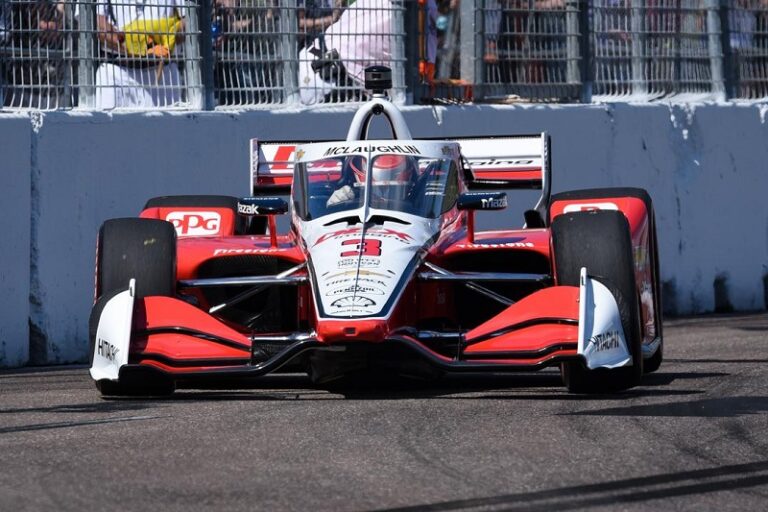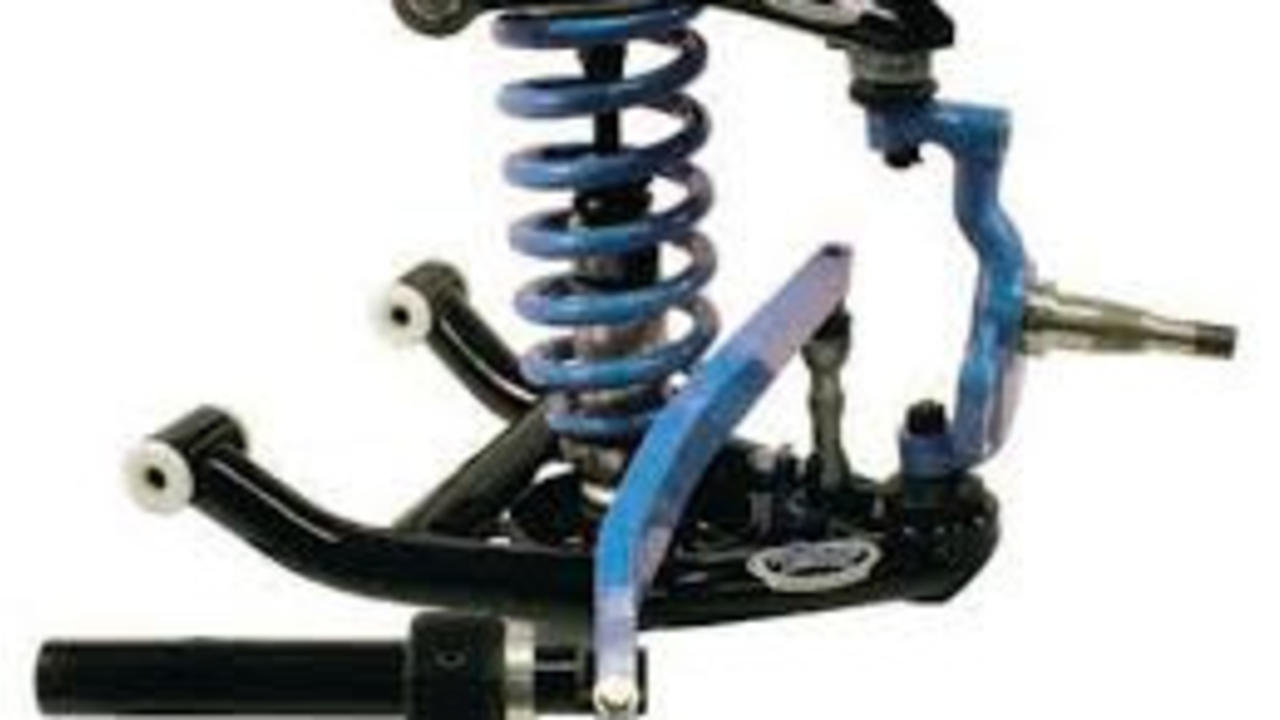Perfecting Your Car Control: Trail Braking and "Zero Steer"
Your Feel for Chassis Rotation in the
Corner Entry AND the Corner Exit, the so-called "transitions"
In my article Rotation - Your Primary Sense of Feel in Controlling the Race Car we showed you how your primary sensitivity in controlling the race car is your ability to feel and respond to the oversteer rotation motion of the chassis, whether that is the tiny initial rotation of the chassis due to tyre slip angle or the better recognized rotation due to oversteer.
To be sure, your highest sensitivity for balance is feeling the rotation always in the oversteer direction. (There is no equivalent feeling for understeer. Driving the car to the understeer limit of grip feels wrong and is slow anyway.)
If we have a well set-up fast race car, the expectation is that we will be continuously driving the race car at the oversteer limit of grip. You can manipulate the balance of the car to reduce understeer and then push until you feel you are at the oversteer limit of the rear tyres. (Some s...
Perfecting Your Car Control - "Black Box" Car Control

As a racing driver, have you ever thought about how much of the race car dynamics (understanding the motion of the race car) you really need to know?
In my new training starting soon, "The Science of Race Car Driving and Suspension Set-Up" you'll learn just those helpful parts of the theory that help you with your mindset around controlling the race car. In this article I am highlighting here the difference in mindset between the racing driver and the race engineer.
--------------------------------------------------------
Vehicle dynamics engineers use mathematics to control the speed and path of the race car, as indicated by the green “maths controller” circle in the above diagram.
Racing drivers obviously can't sense the measured values and do maths calculations on the fly. They are controlling the race car from an entirely different perspective, compared to the engineer.
Essentially, racing drivers are acting as if the race car itself is somewhat of a “black box”, as per th...
PART 1: Perfecting Your Car Control - How Do You Feel What the Race Car is Doing?

Racing Car Drivers...
Here's How to Perfect Your Car Control Skills
In this three part series, we show you some new insights you can implement in helping you perfect your car control skills:
Perfecting Your Car Control Skills PARTS 1,2 and 3
PART 1: How Do You Feel What the Race Car is Doing?
PART 2: "Black Box" Car Control
PART 3: Trail Braking and "Zero Steer" - Two Sides of the Same Chassis Rotation Feeling
------------------------------------------------
There is one aspect of car control most associated with the best racing drivers - the driver must have "good feel for the car".
Yet one of the biggest stumbling blocks, the thing that vexes racing drivers the most when trying to improve their car control, is that we just don't know what it is that the racing driver is feeling.
What if you could know what it is you are “feeling” in controlling the race car?
That could help you build confidence in your skills, wouldn’t it? It could even form the basis for a whole new approach to...
Scott McLaughlin on Cornering at the Limit of Grip


Yes indeed. The multiple V8 Supercar Champion has won his first Indy Car Race!
In this post, see how Scott talks about how he corners the race car at the limit of grip and then also how he decides on the final balance he wants - when the car is quickest - the balance trade-off.
These quotes from Scott, interviewed by Auto Action in 2019 and Speedcafe in 2020, are solid gold in my opinion.
Here is Scott's interpretation of how he feels the balance of the car and the feedback he gives:
SCOTT McLAUGHLIN ON CORNERING AT THE LIMIT OF GRIP – 1ST SUPERCAR TEST, 2019
Here’s a quote from Scott McLaughlin, the 2018 and 2019 Australian V8 Supercar Champion. At the beginning of the 2019 season, Scott McLaughlin said in an interview with Auto Action magazine after his first time out in the brand new DJR Penske V8 Supercars Ford Mustang:
“You have to have a bit more give and take; so, I go ‘give me a ...
What Does Race Driving Teach You About Setup?

Race driving is a confidence game. As you get more experienced in racing, you get to be highly confident in your ability to control the race car, racing consistently up to the capability of you vehicle and your level of skill.
This might easily give you the impression that your racing skill could help you with setup - help you work out what is happening and how you could improve the set-up of your car.
Could not the highly skilled and experienced racing driver say what's needed to make the race car faster?
But our experience with grassroots racing clients is that this is not the case. For example, it is not possible for the driver to say in isolation, just by driving the car, whether the springs should be stiffer or softer. (Spring/Suspension stiffness is perhaps the single biggest contributor to improving the grip and performance of a non-aero race car.)
Racing drivers respond to the race car as they feel it in the moment. How else can we explain the fact that in testing, drive...
Choose Racing Springs You Need with Racing Car Technology's Bounce Test™
In the video, I am showing you how to measure the stiffness of your race car suspension using our Racing Car Tecnology Bounce Test™. It's an exclusive procedure I developed over twenty years ago and have used consistently ever since for quickly and easily setting up race cars.
Measuring "CPM" in the Video
At about 1.00 minute into the video, you can see I have measured 61 bounces in 30 seconds. So, for this Triumph TR3 race car, the front suspension frequency is 122 CPM for the known 550 lb/in springs fitted. If we wanted to go to 130 CPM, for example, we can calculate what stiffer spring rate is required to get that.
What is Suspension Frequency?
We are determining the suspension stiffness in terms of the "suspension frequency" - the undamped natural frequency of the suspension, measured in CPM (cycles per minute), sometimes shown as Hz (cycles per second).
The procedure works for all non-coilover suspensions where we can remove the shock absorbers to do the test. (For coilove...
How Does Weight Distribution Influence Race Car Handling?

The static weight distribution front vs rear locates the centre of gravity in plan view (as seen from above). The position of the centre of gravity is very important in determining the balance of the car, as we shall see in this article.
For a new race car, an important early decision in the design process is the choice of front to rear weight distribution.
Equally, if we are racing an existing car, it’s important to know what our weight distribution is, so we can make decisions about the suspension set-up of the car.
How do we measure weight distribution?
If we have the corner weights, we can determine the weight at the front and rear axles as a proportion of the total weight. E.g. We may have 53% of the total weight at the front axle, leaving 47% of the total weight at the rear axle.
How does weight distribution affect the balance of the car? What is the effect of more front weight? Or more rear weight?
To get answers to these questions, let’s look at the problem from the persp...
Anti-Roll Bars Part 2. *Suspension Stiffness in Roll. *Get More Grip With Stiffer Springs and ARBs

The details of anti-roll bar operation are discussed in our blog article, “Anti-Roll Bars. A Good or a Bad Thing?”
As indicated in that article, there’s much more to anti-roll bars than simply reducing body roll.
In this blog I want to focus on two super important characteristics of anti-roll bars in suspension set-up for racing…Suspension Stiffness in Roll and How You Get More Grip With Stiffer Springs and ARBs.
Suspension Stiffness in Roll
The anti-roll bar adds to suspension stiffness in roll i.e. In cornering, both the spring and the anti-roll bar contribute to the suspension stiffness as seen at the tyre contact patch.
I’m going to quote a vehicle dynamics expert here, so you don’t think I am making this up:
“Typically, a bigger bar on the front improves the perception of nimbleness, (agility), as it makes the outer tire work harder in the first half a second or so (of initial turn-in).” Greg Locock – Engineering Tips Internet Forum. Greg is a Vehicle Dynamics Engineer. I
...
Tyre Slip Angle Know-How for Racing Drivers

In this article, get a deeper understanding of these all important "tyre slip angles". Learn how the race car turns a corner, how the tyre slip angle are created, and what it means for you in driving and controlling the race car.
----------------------------------------------
When you turn the race car into the corner, the forward momentum of the car generates a lateral force at the front tyres, forcing the generation of what we know as "tyre slip angles".
Tyre slip angles are a property of the pneumatic tyre that allows the creation of substantial lateral force at the tyres, and in so doing, allows the car to turn.
If you just presented the steered road wheels to the road road rushing by without slip angles, it's a bit like presenting the wing on an aircraft without an angle of attack. For the aircraft, no lift. For the race car, no lateral grip. (If we had steel treads, for example, there would be no slip angles, and insufficient friction available to create any significant cor...
3 Steps to a Great "Baseline Set-Up"


It’s no good making random adjustments to your race car set-up at the race track. You'll most likely get lost with the changes you make, and end up not making the car any faster.
Magazine articles, "cheat sheets", and generalized advice you get on set-up from internet web sites, are particularly unhelpful. No wonder the general impression most racers get is that handling, as it applies to set-up, must be very complicated.
Even someone highly experienced both as a driver and a set-up engineer cannot tell what you need straight off. They can't just jump in your race car, do some laps, and then say you need XYZ springs and anti-roll bars.
What you need is a baseline set-up. The set-up we know is close to optimum. Then in testing, you and/or your team, can decide what changes you’ll try.
At Racing Car Technology, the baseline is the set-up we can do in advance in the workshop, then go to the track knowing we are in the set-up window. Make further adjustments at the track to ...


